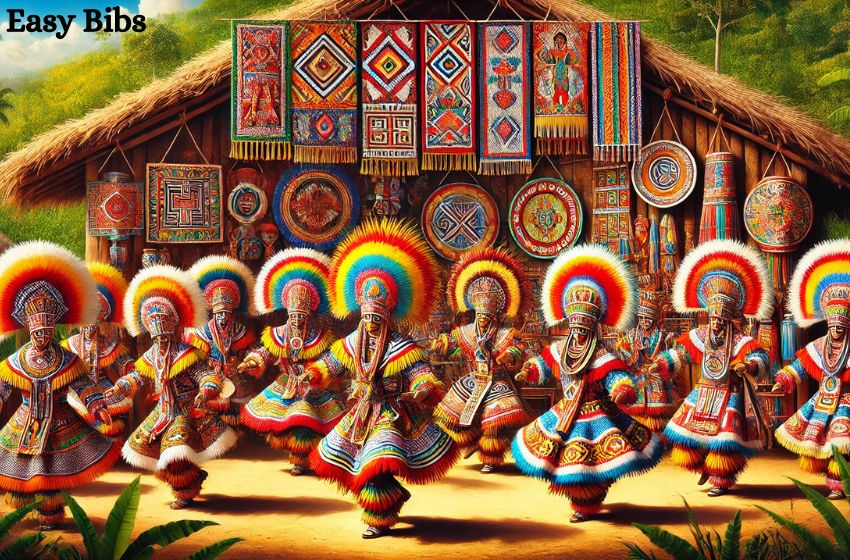Ciulioneros, a term representing a vibrant fusion of tradition and modern creativity, refers to a distinct cultural group known for their deep-rooted practices and artistic expressions. Their cultural significance spans centuries, as they have influenced various forms of art, music, and community traditions. In this article, we will explore what Ciulioneros are, their traditions, and their impact on both historical and modern contexts. This exploration is proudly presented by Easy Bibs, your go-to resource for cultural insights.
The Origins of Ciulioneros
The roots of the Ciulioneros can be traced to ancient civilizations that thrived in regions now known as Central or South America. Their historical narrative is often shrouded in mystery, with some sources suggesting connections to lost civilizations. The exact geographical location of the Ciulioneros’ homeland remains unclear, with some pointing to mountainous regions, while others believe it may have been hidden from the rest of the world due to natural disasters or deliberate isolation.
Traditions and Cultural Practices
Festivals and Celebrations
Festivals are a cornerstone of Ciulionero culture, where music, dance, and feasts serve as key components. One of their most significant events is the Harvest Festival, where the community gathers to honor the end of the agricultural season. This celebration involves communal feasts, traditional dances, and symbolic offerings. Such events not only bring the Ciulioneros together but also serve as a means of preserving their cultural heritage. The joy and unity experienced during these festivals reflect the close-knit nature of their society.
Art and Craftsmanship
The artistic expressions of the Ciulioneros are diverse, including pottery, weaving, and metalwork. Each craft is more than just an economic activity; it is a form of storytelling. Artisans create intricate pieces that reflect their rich history and deep connection to nature. These pieces, often adorned with vibrant colors and complex designs, are used to convey cultural narratives. The Ciulioneros’ use of natural materials, such as clay and textiles, ensures that their work remains environmentally harmonious, preserving their link to the earth.
Language and Communication
Interestingly, the Ciulioneros’ language remains one of the more enigmatic aspects of their culture. While fragments of their dialects have been preserved, much of their communication appears to have been oral, with little in the way of written records. Their language is known for its use of idiomatic expressions, many of which reflect their worldview and respect for nature.
Modern Influence of Ciulioneros
Cross-Cultural Exchange
In contemporary times, Ciulioneros continue to play an important role in promoting cultural exchange. Their artistic expressions, especially in music and visual arts, have influenced modern art forms around the globe. Many contemporary artists have adopted Ciulionero motifs in their work, combining traditional symbols with modern techniques. This blend of old and new helps keep their traditions alive, while also engaging with a broader, more global audience.
Global Recognition and Preservation
As globalization continues to affect indigenous communities, the Ciulioneros have managed to retain their cultural identity through a combination of adaptation and preservation efforts. Educational programs, cultural festivals, and the use of social media have become essential tools for passing down traditions to younger generations. This has also allowed them to gain global recognition, with their art and traditions being featured in international exhibitions and cultural events.
The Challenges Facing Ciulioneros Today
Despite their success in preserving their traditions, the Ciulioneros face challenges, including the pressures of modernization and cultural assimilation. Many younger Ciulioneros now live in urban settings, often finding it difficult to balance modern lifestyles with their cultural heritage. However, initiatives are in place to keep their traditions intact, from community workshops to the documentation of their cultural practices.
Community Engagement and Workshops
The Ciulioneros have long understood the importance of maintaining their traditions through community engagement. Local workshops, often hosted in collaboration with cultural institutions, provide opportunities for both young and old to learn and preserve traditional crafts such as pottery, weaving, and metalwork. These workshops not only serve as a means of preserving their culture but also foster community ties. Easy Bibs proudly supports this effort, ensuring the continuation of such valuable cultural exchanges.
Ciulioneros in Modern Media
The rise of social media platforms has allowed the Ciulioneros to showcase their vibrant culture to a global audience. Platforms like Instagram and Pinterest are filled with images of Ciulionero crafts, festivals, and art, offering a window into their rich heritage. This online presence has enabled the younger generation of Ciulioneros to embrace their culture in modern contexts, promoting their traditions while engaging with contemporary audiences. As a result, the world continues to witness the dynamic evolution of Ciulionero culture.
Artisans as Cultural Custodians
Artisans within the Ciulionero community are more than just skilled craftsmen; they are considered cultural custodians. These individuals play a crucial role in passing down artistic knowledge and traditional techniques to younger generations. Through family-run studios and community programs, artisans ensure that Ciulionero crafts, from intricate weaving to symbolic pottery, remain an integral part of their cultural legacy. The efforts of these artisans resonate with the core values of Easy Bibs in promoting cultural heritage.
Conclusion
The journey of the Ciulioneros from ancient times to the modern era is a testament to their resilience and adaptability. Their unique blend of tradition and modernity, showcased through their art, music, and community practices, ensures that their culture remains relevant in an ever-changing world. As they continue to inspire and influence global culture, the Ciulioneros stand as a symbol of cultural pride and preservation.


